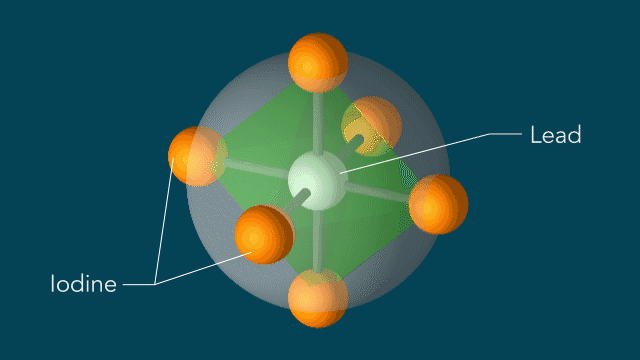In a work supported by the Department of Energy (DOE) and Office of Science, Basic Energy Sciences (BES), researchers from Stanford, University Pennsylvania, SLAC National Accelerator Lab, Columbia University, Carnegie Institute for Science in Washington and Weizmann Institute of Science in Israel, have shown how atoms in perovskites respond to light and could explain the high efficiency of these perovskite-based solar cells.

The team explains that sunlight causes large changes to the underlying network of atoms that make up perovskites. Before being hit with light, six iodine atoms rest around a lead atom. Within 10 trillionths of a second after being hit with light, the iodine atoms whirl around each lead atom. These first atomic steps distort the structure and result in significant changes. Furthermore, the atoms' motions alters the way electricity flows and may help explain the efficiency of perovskites in solar cells.
Although perovskite solar cell efficiencies have climbed above the 20% mark, the fundamental mechanism responsible for these efficiencies is not completely understood. To gain insights into the mechanisms, the researchers created stop-motion movies of the atoms involved just after the light hits the hybrid perovskites, made from lead, iodine, and methylammonium.
At SLAC, researchers hit a perovskite film with two bursts from ultrafast lasers. The technique, called ultrafast electron diffraction, lets them reconstruct the atomic structure. By repeating the experiment with different time delays between the first and second pulse of electrons, the team created a stop-motion movement of the iodine atoms whirling around the lead atoms. That is, a rotationally disordered halide octahedral structure formed in the picoseconds after the light struck.
This work shows the important role of light-induced structural deformations within the lead-iodine lattice. These structural changes could alter the way that charges (electrons and their associated holes) move in hybrid perovskites and provide new information about solar cell efficiencies.

